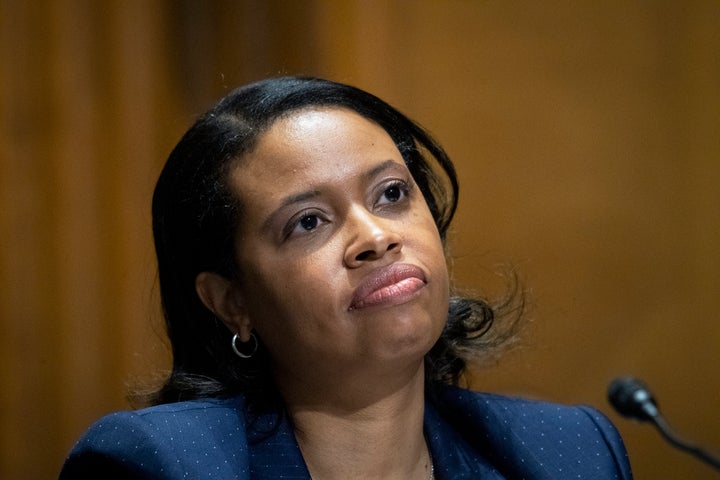More than 2 million people have signed up for insurance through the Affordable Care Act’s online marketplaces since Feb. 15, taking advantage of the Biden administration’s extended period for open enrollment that began on that day, the Department of Health and Human Services announced on Wednesday.
That figure means total marketplace enrollment is probably at an all-time high, while the number of uninsured Americans may be at an all-time low. In both cases, a big reason would be a set of temporary improvements to the Affordable Care Act that President Joe Biden and Democrats are now trying to make permanent.
Roughly 600,000 Americans have signed up for insurance through state-run marketplaces like Covered California, according to HHS, while 1.5 million have gotten coverage through HealthCare.gov, the website that the federal government runs on behalf of the remaining states.
These online marketplaces, which are part of the health care law referred to as Obamacare, are for people who don’t have insurance through an employer. Enrollment in them increased for the Affordable Care Act’s first three years of operation, swelling to about 12.7 million in 2016, then dipped slightly until 2020, when it started to increase again ― most likely, because the economic downturn from the pandemic left more people without employer coverage and searching for alternatives.
This happened despite overt hostility from Donald Trump, who as president led Republican efforts to repeal the Affordable Care Act. Biden, who famously called the health care overhaul a “big f**king deal,” has taken a variety of executive actions designed to bolster the program. One of those was an extension of “open enrollment” at HealthCare.gov that started on Feb. 15 and is set to last until the middle of August.
The other big change was legislative. The American Rescue Plan, a COVID-19 relief bill that Democrats passed and Biden signed in early 2021, made the program a lot more generous by making more people eligible for the program’s financial assistance and increasing the assistance to those who already qualified.
The differences are quite dramatic for some insurance buyers ― on the order of hundreds, or sometimes thousands, of dollars a year. The result is lower premiums, which in turn lets some people pay for more generous plans.
“The American Rescue Plan has made health coverage more affordable and accessible than ever ― and people are signing up,” said Chiquita Brooks-LaSure, who as chief administrator for Medicare and Medicaid also oversees the Affordable Care Act marketplaces.
It’s likely that a big chunk of the people enrolling now would not have had insurance otherwise, experts have said, and that the number of uninsured Americans is falling.
“There is no question that the reopening of ACA enrollment and increased premium help under the American Rescue Plan are pushing the number of uninsured people down,” Larry Levitt, executive vice president at the Henry J. Kaiser Family Foundation, told HuffPost on Wednesday. “Many people who were already insured are also seeing their premiums drop.”
The new financial assistance means the Affordable Care Act more closely resembles the original vision for the program, before political compromises that scaled back the program’s reach.
But the new assistance is temporary, because it’s a COVID-19 relief measure, and will run out after next year unless Congress makes it permanent.
Biden and Democrats are trying to do just that, by including an extension of the subsidies in the large spending bill they hope to pass later this year.
Even with the enhanced financial assistance, many millions of people still struggle with the cost of insurance and health care ― and many millions remain uninsured altogether. Biden and Democrats are also trying to address that, through a variety of measures that could also end up in that spending bill.
Among the items under discussion are proposals to fill the “Medicaid gap.”
Originally, the Affordable Care Act was supposed to make all low-income Americans eligible through state Medicaid programs. But Republican officials in a dozen states have declined to expand their programs, even though the federal government would pick up most of the cost, citing both philosophical objections to more government-sponsored insurance and a belief that even the minimal state contribution was too much for their budgets.
That decision has left several million poor Americans in states like Florida and Georgia uninsured. Now Democrats are looking at ways to cover those people directly, through some kind of new federal program.
Also under discussion is a proposal to add dental, vision and hearing benefits to Medicare, providing relief to senior citizens who struggle with these expenses.
All of these initiatives would entail trade-offs, as is always the case in health policy. One of those is cost. Each of these initiatives would require hundreds of billions of dollars in new spending over the next 10 years.
Democrats have said they want to finance new health care initiatives primarily through a combination of new taxes on the wealthy and new federal regulation of drug prices, which would reduce government spending.
But both of those ideas come with their own trade-offs ― and political opponents.
Source: Read Full Article
